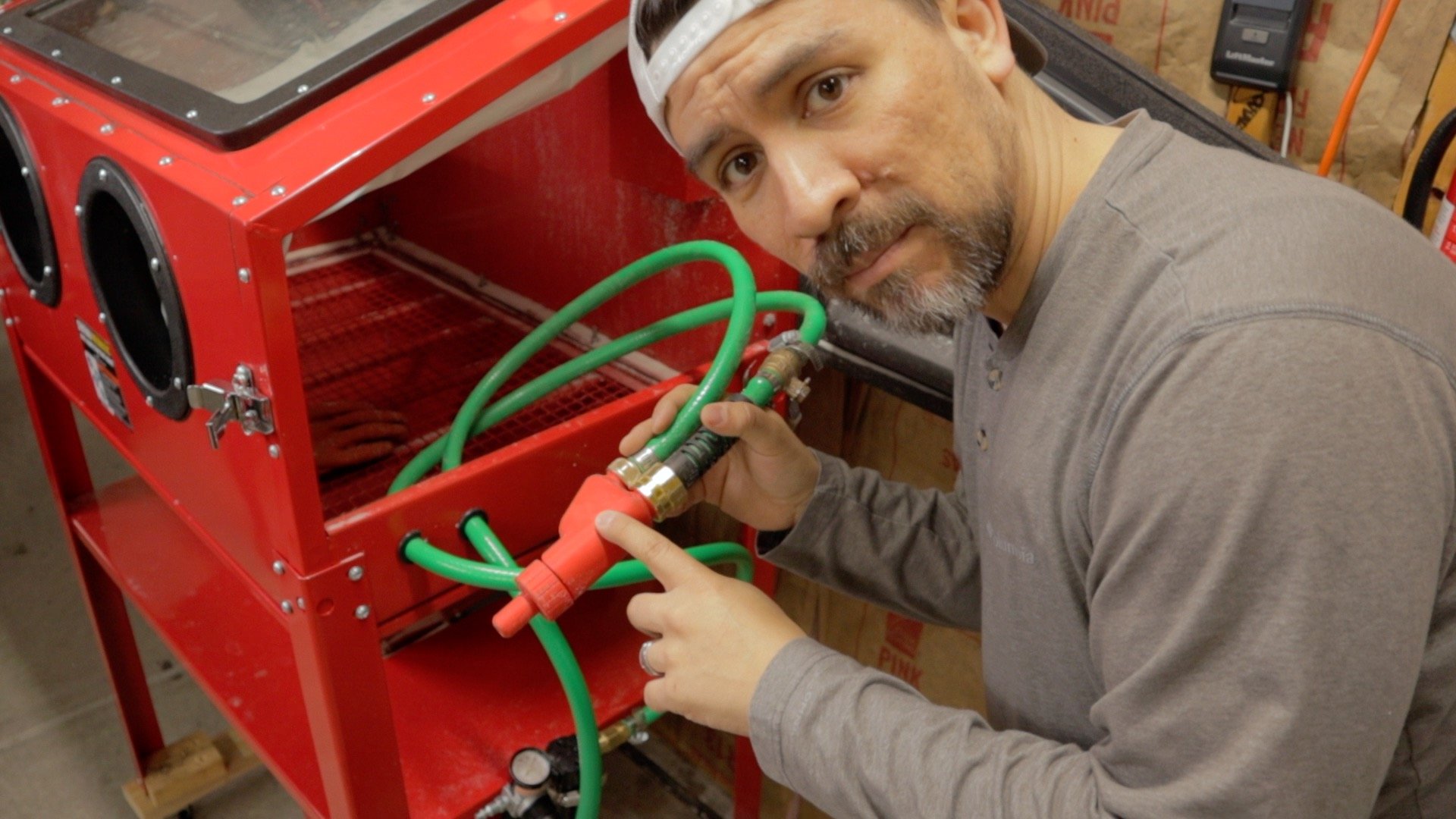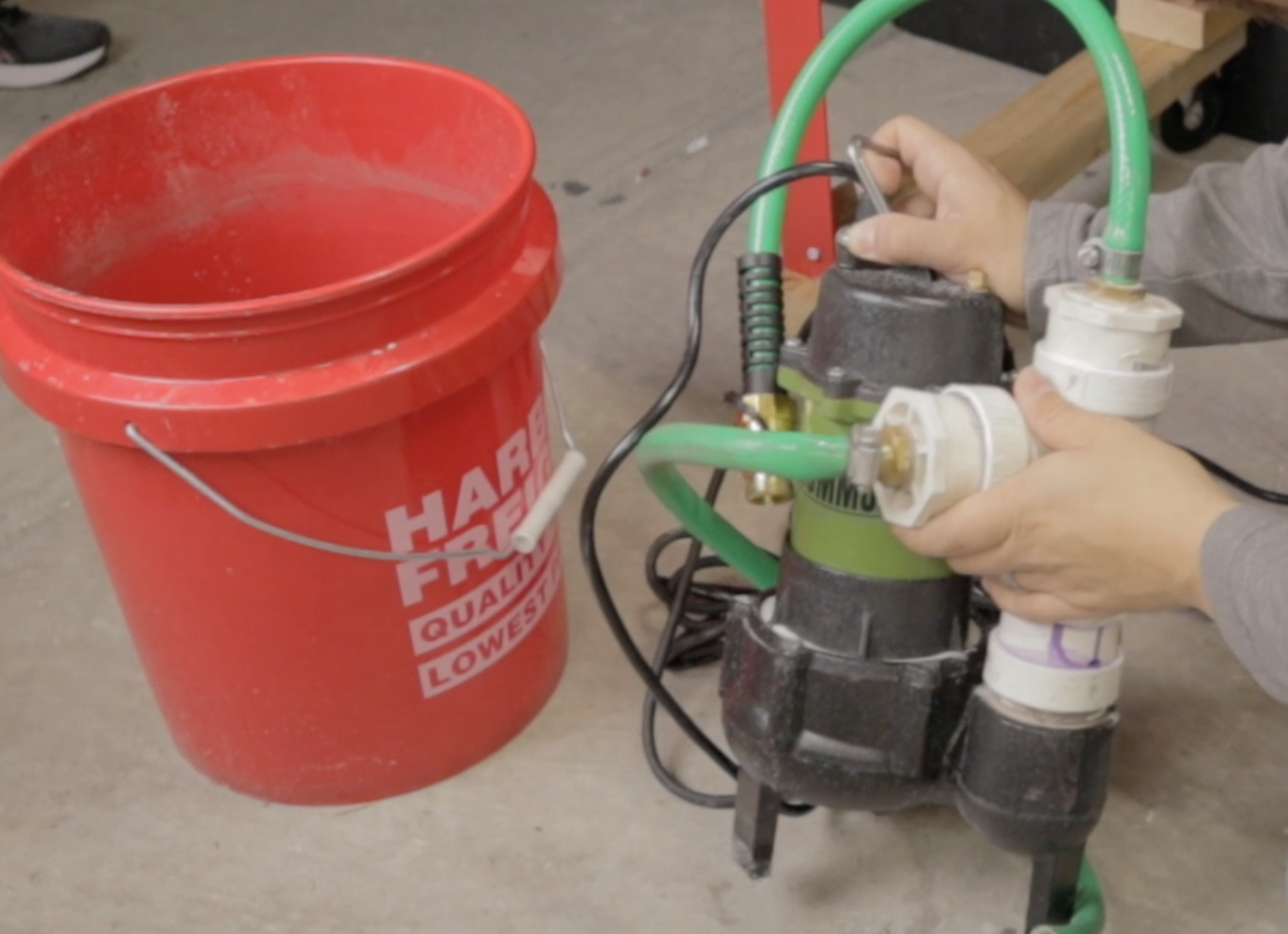HOW TO MAKE A VAPOR BLASTER FOR PARTS RESTORATION
We have tons of automotive parts which need to be restored; from a Datsun 510 valve cover to 280ZX thermostat housings.
Datsun 510 Valve Cover, Datsun 280ZX Thermostat, and 280ZX Air Intake
PARTS LIST
Harbor Freight Sand Blasting Cabinet or Amazon equivalent cabinet.
Custom 3d Printed Victor Bared 3d Printed Vapor Blaster Gun
Harbor Freight Drummon 1/2 HP Sewage Pump or Amazon Equivalent Pump
Harbor Freight 80 grit glass bead media or Amazon Equivalent Glass Bead media
Harbor Freight Air Regulator or Amazon Equivalent Air Regulator
Harbor Freight Water Separator or Amazon Equivalent Water Separator
Air Compressor Hose (3/8 or larger diameter)
Misc. PVC/Hose/Air Connectors







So we purchased a Harbor Freight sand blasting cabinet and decided to converted it into a DIY vapor blasting cabinet.
A vapor blaster uses a mixture of water and glass bead media that uses compressed air to clean/polish parts.
The media is mixed together with water using a pump. The pump also delivers the mixture to a vapor blasting gun along with high pressure air that blasts the surface of parts. Starting with 80 grit glass bead media works great for tough jobs. Then you can work your way up to 100-170 grit which creates a nicer satin polished finish.
DIY Vapor blasting also removes the risk of inhaling dust particles and is much easier to clean up.
Vapor Blasting a Datsun 280ZX Thermostat Housing with 80 grit glass bead media
We started with a 28 gallon 1.8HP 120v compressor, but it struggles with parts that have pitted rust and left over paint. We also recommend you use a proper paint stripper before you vapor blast. You’ll also need to run at least 50 PSI.
You’ll be very disappointed with how much good pressure you get if you go with a small 4 SCFM rated air compressor.
It will only give you maybe a minute of good results. Even when the compressor powers on, it still won’t be strong enough for what a vapor blaster needs. A pancake air compressor or even a larger 20 gallon just WON’T cut it.
Find the highest rated SCFM and duty cycle you can afford.
This will more than likely require a 220v circuit, but it will be well worth the investment.
Try and budget for an air compressor with at least 12 SCFM or higher like an Eastwood Scroll 30/60 air compressor.
PUMP & MISC PARTS
You’ll also need a trash/sewage pump, bucket, hoses, clamps, and appropriate fittings. The trash pump will sit in the bucket with water and media.
The pump requires a tee fitting for one small hose to go to the bottom of the bucket and another hose to feed into your vapor blasting gun.
The hose at the bottom of the bucket will make sure your glass bead media mixes into the water and the other hose goes into your vapor blasting gun. The bucket with the pump can go right under the bottom of the sand blasting cabinet collector with the trap door open.
AIR HOSE, REGULATOR, & SEPARATOR
You’ll also need proper air hoses to go from your air compressor into a proper air regulator, then into an air/water separator. You’ll also want a shut off value right before the hose goes into the other input port of your vapor blasting gun.











